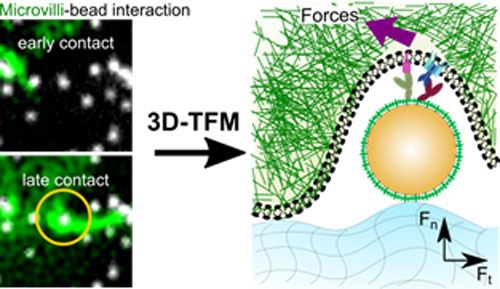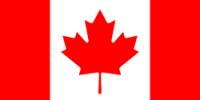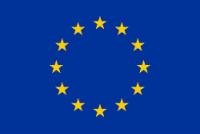Mechanical forces play a vital role in many biological mechanisms, such as the sensing of infected cells by T-cells. For example, T-cells (and other cells in our immune system) use mechanical forces to explore their environment, by pulling or pushing the other cells or tissue surfaces. These forces help T-cells to discriminate between pathogenic invaders and the body's own cells, during the so-called antigen recognition process. Recent research shows that T-cells sense their environment through small ‘finger-like’ protrusions of the cells, called microvilli.

Figure: novel microscopy methods unravel the mechanical interaction of T-cells with small particles.
In a recent study, an international team of scientists, visualised the microvilli in action, where they exert local pushes and pulls at the surface of the antigen presenting surface. HFSP Young Investigators Enrico Klotzsch at Humboldt University, Berlin and Jonas Ries at EMBL, Heidelberg, together with researchers from ETH Zurich, the Medical Universities of Vienna, Vienna University of Technology and Charité – Universitätsmedizin Berlin, have developed a platform, which enables the magnitude and direction of traction forces exerted locally by the T-cell fingers to be quantified and at the same time measures the overall T-cell activation status. This platform will find broad applications and contribute towards developing better treatments and improving patient health in adoptive immunotherapies.


































